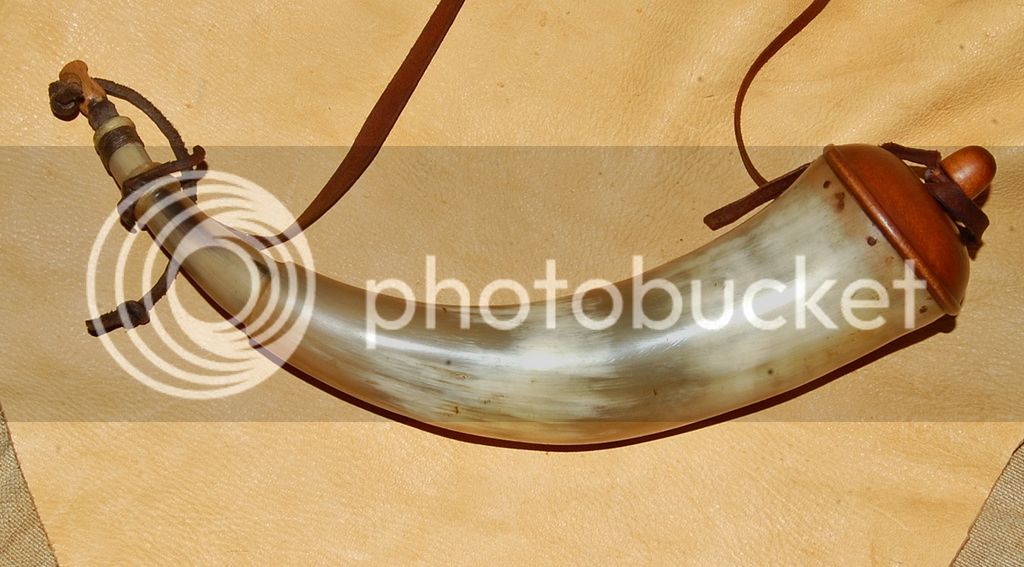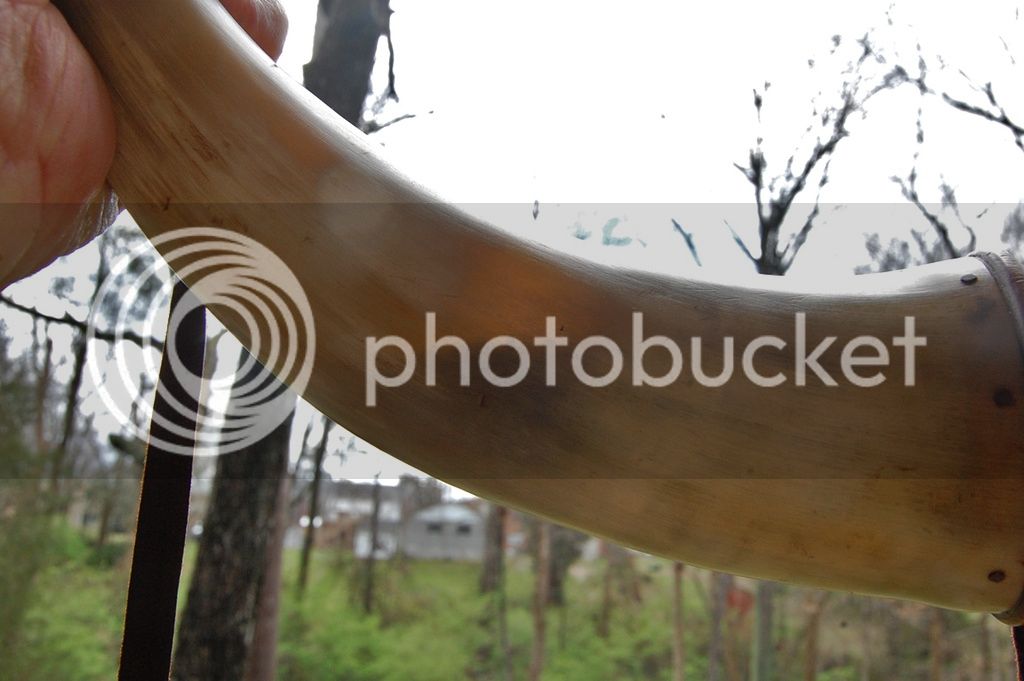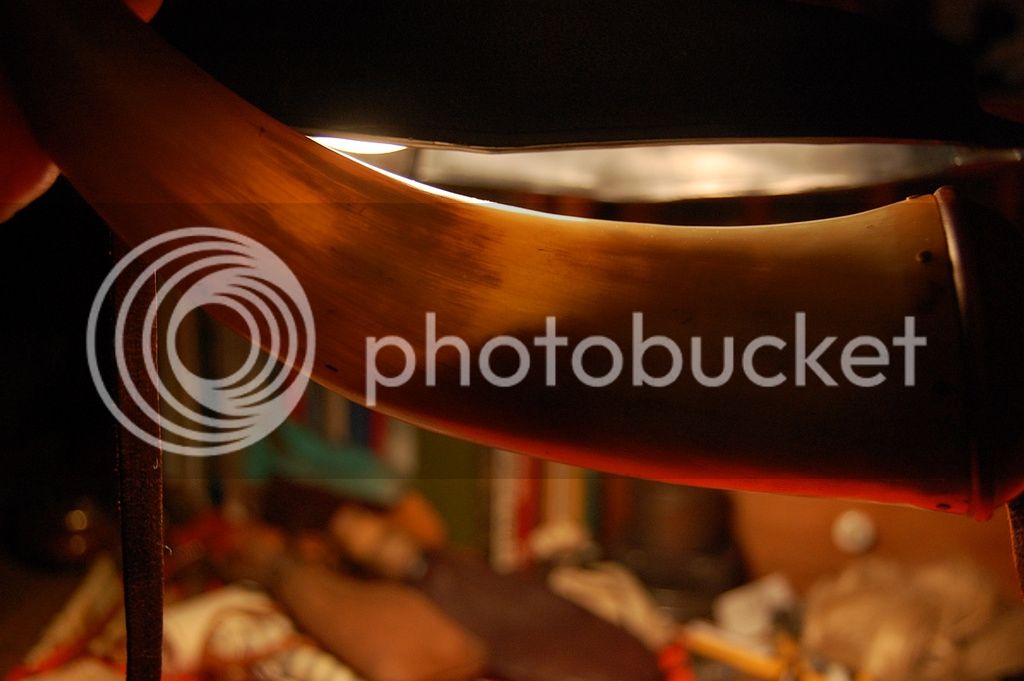A long time ago, I read somewhere that some powder horns were scraped so thin they were somewhat translucent so you could see the powder through them. This seems to me to be dangerously thin, but I don't know. Anyone ever heard of this, or actually do this? Seems like it would seriously weaken a horn, but maybe not. I can't remember where I read this...maybe it's a false memory.
You are using an out of date browser. It may not display this or other websites correctly.
You should upgrade or use an alternative browser.
You should upgrade or use an alternative browser.
Thin horns
- Thread starter Gene L
- Start date

Help Support Muzzleloading Forum:
This site may earn a commission from merchant affiliate
links, including eBay, Amazon, and others.
I have heard the same thing, but I have several horns that are not dangerously thin, yet when held up to the sunlight, I can see the level of the powder. It's very faint, but it can be seen.
LD
LD
- Joined
- Jan 3, 2004
- Messages
- 14,767
- Reaction score
- 321
Gene L said:...seems to me to be dangerously thin....
I don't see the danger in thin. Horn is awfully tough stuff when you work with it, and even thin, I have trouble bending or breaking it. I'm a whole lot more worried by cartridge boxes with the flap open or no flap at all.
zimmerstutzen
70 Cal.
- Joined
- Apr 2, 2009
- Messages
- 5,848
- Reaction score
- 1,216
horn is a remarkable material and can be quite thin. Colonial hornbooks, were paddle shaped pieces of wood with a piece of paper on which the alphabet or some other commonly referred to lesson was printed and then covered with s thin sheet of horn to protect the paper. thin pieces of horn were used in place of glass in lanterns Horn can be translucent to see the powder without being dangerously thin, especially depending on the type of horn. Many cattle today are "polled" ie do not grow horns pr are dehorned, having the horn buds burned soon after birth. . Most cattle in colonial days were permitted to grow their horns and long horns helped hold the yoke on oxen. Horn was a commodity then far more valuable than today. Buttons, spoons, powder horns and thin pieces as substitutes for glass, other containers,
S.Kenton
58 Cal.
A while back I made a horn like that. Photobucket won't work for me or I'd show you a picture of it. I didn't engrail it, nor make it fancy, but it's one of my favorite horns. You can plainly see powder in it when held to the light, if ya look really hard ya don't have to hold to the light at all. The translucent area is just about half the horn body, not the whole horn. It's very light and useful.
- Joined
- Aug 21, 2010
- Messages
- 3,710
- Reaction score
- 476
I have 4 southern horns made by Scott Sibley an when held up to the sun or a light in the house I can see the powder in all four of them. I cant say as to be dangerous but I like being able to see the powder level. Horn seems to be a heck of a tough stuff so I just aint too worried about it :idunno:
This horn is the one and only one I made, and I made no effort to make it thin enough to see through, it's normally thick. It seems that some horn material is just naturally translucent enough to be able to see the powder level. The tan/gray areas of this horn lets light through, but the white areas are totally opaque.

With light from a dull, overcast sky...

With light from a lightbulb...

After all that, I don't find it particularly helpful to be able to see the powder. Conditions have to be just right, but I can just tilt the horn back and forth any old time and tell pretty closely how much powder is in it just from the shifting weight.
Spence

With light from a dull, overcast sky...

With light from a lightbulb...

After all that, I don't find it particularly helpful to be able to see the powder. Conditions have to be just right, but I can just tilt the horn back and forth any old time and tell pretty closely how much powder is in it just from the shifting weight.
Spence
AZbpBurner
54 Cal.
Pretty horn, Spence!!
For all of you with the light honey-colored horns, you can often see powder level with backlighting.
OTOH, all my horns are as black as a coalminer's lungs and opaque as a concrete bunker - no light bright enough to see inside mine.
Guess I'll be content just shaking mine and refilling when it sounds & feels low on powder :thumbsup:
For all of you with the light honey-colored horns, you can often see powder level with backlighting.
OTOH, all my horns are as black as a coalminer's lungs and opaque as a concrete bunker - no light bright enough to see inside mine.
Guess I'll be content just shaking mine and refilling when it sounds & feels low on powder :thumbsup:
excess650
50 Cal.
- Joined
- Nov 25, 2009
- Messages
- 1,671
- Reaction score
- 640
I spent many hours scraping a horn to get it "translucent thin". Eventually it developed a "soft spot" where the horn was literally paper thin. I've since concluded that translucent is over rated. :surrender:
My favorite hunting horn is one that I scraped to octagon profile and holds about 1/2#. Some years back I bought a professionally made screw tip. It holds more powder and is a beauty, but has never had powder in it and hangs on the wall with a bag as decoration. :haha:
My favorite hunting horn is one that I scraped to octagon profile and holds about 1/2#. Some years back I bought a professionally made screw tip. It holds more powder and is a beauty, but has never had powder in it and hangs on the wall with a bag as decoration. :haha:
- Joined
- Apr 15, 2016
- Messages
- 3,521
- Reaction score
- 3,872
My favorite hunting horn was my first, from a cheap kit. No chance of seeing into it, I can tell by rocking it tip to butt how much is left.
It sees more use than any horn I have made since because I don't care what happens to it in the woods. Its nice not to worry about getting a scratch across 60 hours of artwork. Lets me pay attention to the woods, not my stuff. :v
It sees more use than any horn I have made since because I don't care what happens to it in the woods. Its nice not to worry about getting a scratch across 60 hours of artwork. Lets me pay attention to the woods, not my stuff. :v
Similar threads
- Locked
WITHDRAWN
Scrimshaw Nautical Theme Horn (Reduced)
- Replies
- 4
- Views
- 754




